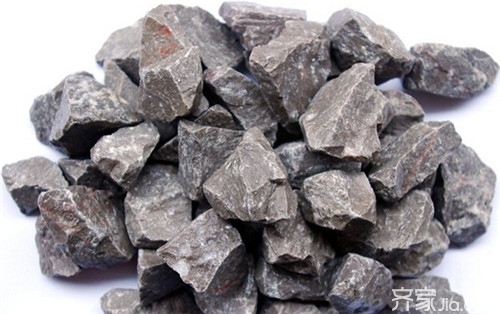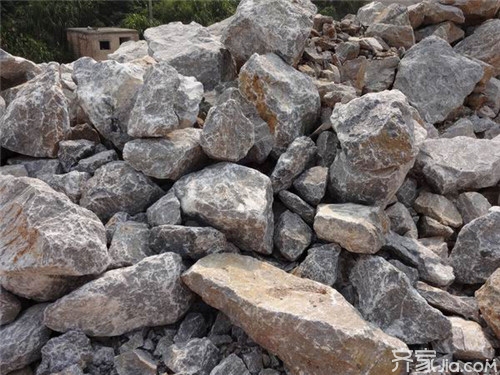[Building Materials] Limestone Knowledge Introduce the Damage of Limestone
Lime believes everyone has seen that lime is a kind of gas-hard inorganic gelling material with calcium oxide as its main component. Lime is a product with high calcium carbonate content such as limestone, dolomite, chalk, and shells, and is calcined at 900 to 1100°C. How much do limestone people know? Limestone is widely used in building materials and industrial raw materials. So what harm does it have? The following Xiao Bian will give you a brief introduction to limestone knowledge.

Limestone knowledge introduction
The main component of limestone is calcium carbonate (CaCO3). Lime and limestone are used extensively as building materials and are also important raw materials for many industries. Limestone can be directly processed into stone and burned into quicklime. Lime has quicklime and hydrated lime. The main component of quicklime is CaO. Generally, it is massive, pure white, and pale gray or light yellow when containing impurities. Lime absorbs moisture or adds water to become slaked lime. Slaked lime is also called ripe lime. Its main component is Ca(OH)2. The hydrated lime is formulated into lime slurry, lime paste, etc., and used as a coating material and a tile adhesive.
Application of limestone
Calcium carbonate is the main component of limestone, which is the main raw material for glass production. Lime and limestone are used extensively as building materials and are also important raw materials for many industries. Calcium carbonate can be directly processed into stone and burned into quicklime. Lime has quicklime and hydrated lime. The main component of quicklime is CaO, which is generally blocky, pure white, and pale gray or pale yellow when containing impurities. Lime absorbs moisture or adds water to become slaked lime. Slaked lime is also called ripe lime. Its main component is Ca(OH)2. The hydrated lime is formulated with lime slurry, lime paste, lime mortar, etc., and used as a coating material and a tile adhesive.
Cement is made by mixing limestone and clay and calcined at high temperature. The glass is made of limestone, quartz sand, soda ash (sodium carbonate), etc. Ironmaking uses limestone as a flux to remove gangue. Steelmaking uses lime as a slagging material to remove harmful impurities such as sulfur and phosphorus. Calcium carbide (mainly CaC2) is produced by reacting quicklime with coke in an electric furnace. Soda ash is produced using limestone, salt, ammonia and other raw materials in a multi-step reaction (Solvay). The use of slaked lime and soda reaction made caustic soda (causticizing method). Pure bleached lime reacts with chlorine to produce bleach. Chemical limestone is used to make important calcium salts such as calcium chloride, calcium nitrate, and calcium sulfite. The slaked lime removes the temporary hardness of water and is used as a hard water softener. Limestone calcined to produce relatively pure powdered calcium carbonate, used as filler for rubber, plastic, paper, toothpaste, cosmetics, etc. Soda lime made from lime and caustic soda is used as absorbent for carbon dioxide. Quicklime is used as a desiccant and disinfectant. In agriculture, lime sulfur mixture, Bordeaux mixture and other pesticides are prepared with quicklime. Applying slaked lime to the soil can neutralize the acidity of the soil, improve the structure of the soil, and supply the calcium needed for the plant. Brush the trunk with lime slurry to protect the trees.

Flying powder: It is used to produce anhydrous calcium chloride and is an auxiliary raw material for the production of sodium dichromate. The main raw material for glass and cement production. In addition, it is also used for building materials and poultry feed.
Flying powder: It is a raw material for the production of anhydrous calcium chloride and glass, white fillers for rubber and paint, and building materials.
Three fly powder: used as filler for plastics, paint putty, paint, plywood and paint.
Four fly powder: used as filler for wire insulation, rubber molded products, and fillers made of asphalt felt.
Calcium carbonate is an important building material. White and pure calcium carbonate rock is called white marble, which can be directly used for decorative stone pillars or handicrafts. Calcium carbonate with beautiful patterns containing impurities is called marble, and it is used to make veneers or laying floors on the exterior and interior walls of buildings. Dense calcium carbonate rock (limestone) can also be used directly for building houses, but the main purpose of limestone is to produce cement. The white stone containing CaCO3 above 90% is pulverized, classified and separated by Raymond Mill or other high-pressure mill.

Limestone hazards
Workers engaged in mining and processing often have upper respiratory tract inflammation, bronchitis, and may be accompanied by emphysema. X-ray showed lymph node calcification and enhanced lung texture. Workers suffering from pneumoconiosis are mainly related to silica impurities contained in this product.
Isolation of contaminated areas and restrictions on access. It is recommended that emergency personnel wear a dust mask (full face mask) and wear uniforms. Avoid dust, be careful to sweep, place in bags and move to a safe place. If there is a lot of leakage, cover it with plastic sheeting and canvas. Collect collected or transported to waste disposal site for disposal.
Editor's summary: The introduction of limestone knowledge and limestone hazards were introduced here. I hope this article will be helpful to everyone. If you still have something you don't understand, you can leave a message to Xiaobian at the bottom. We will answer your questions as soon as possible.
Decoration budget knowledge spring decoration knowledge decoration material knowledge autumn decoration knowledge design knowledge
Outdoor Landscape Lights,Outdoor Led Motif Lights,Solar Led Motif Lights,Outdoor Solar Garden Lamp
Tianjin Jinji Optoelectronic Technology Co., Ltd. , https://www.tjjjgd.com
